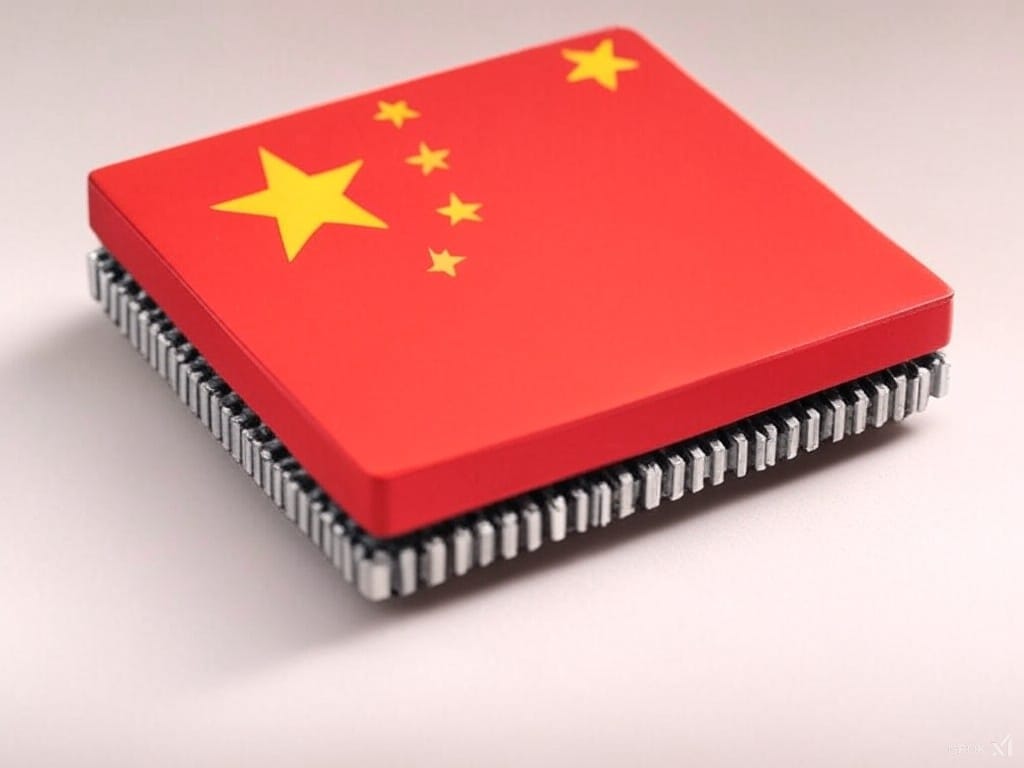The global semiconductor market is facing unprecedented pressure due to China’s aggressive strategy to lower chip and wafer prices. According to a recent report by Hana Securities, traditional Chinese foundries, led by SMIC, have drastically reduced prices for mature processes like 28 nm. This move is forcing giants such as TSMC to rethink their pricing strategies to remain competitive in 2025.
Price Cuts: China Leads the Game
In December, SMIC reduced the price of 28 nm wafers by a staggering 40%, bringing the cost down from $2,500 to approximately $1,500 per unit. This move, also extended to other Chinese companies, affects not only 8-inch wafers but also the larger 12-inch ones, intensifying pressure on global prices.
The strategy aims to capture market share in mature nodes, those larger than 7 nm, where demand remains significant but profit margins are thinner. In a context where Chinese companies benefit from government financial backing, global manufacturers face a titanic challenge.
TSMC in the Crosshairs: A Necessity to Adapt
The report indicates that TSMC, the undisputed industry leader, will also be forced to lower prices for processes greater than 7 nm. Despite its solid profit margin, historically over 55%, this reduction is inevitable if it wishes to maintain competitiveness against Chinese foundries.
The price reduction is not just a strategic issue; it’s a necessary response to the unfair competition created by China’s subsidy policies. This country, with its ability to inject public funds swiftly and massively, is redefining market rules.
The Global Effect: Impact on ASP
China’s actions are already having a tangible impact on global ASP (average selling prices). With lower prices on 8-inch and 12-inch chips and wafers, international markets are seeing significant drops in value for best-selling and less technologically advanced products.
This presents a paradox: as China lowers its prices to gain market share, companies operating under normal market conditions threaten their profitability. Global foundries like TSMC, Intel, and Samsung are being pushed to compete on an uneven playing field, where China’s ability to absorb losses through government subsidies represents an insurmountable advantage.
The Chinese Strategy: Dumping in the Global Market
China’s strategy is not new, but its current scale and speed are alarming. This type of unfair competition, known as dumping, involves selling products below production costs thanks to state subsidies. This not only makes it difficult for other companies to compete but also jeopardizes the long-term stability of the global sector.
The situation has prompted actions like the CHIPS Act in the U.S., designed to counter these practices through subsidies and financial support for local companies. However, bureaucracy in Western countries is slowing down these efforts, while China moves forward unrestricted due to its centralized control.
Long-Term Implications
The pressure on prices could trigger several long-term effects in the semiconductor industry:
- Market Consolidation: Smaller companies may be forced to exit the market or merge with larger competitors to survive.
- Reduction in Investment in Innovation: With lower margins, global companies may cut their R&D budgets, affecting innovation in advanced processes.
- Dependence on China: As China captures greater market share, global reliance on its manufacturers will increase, a potentially dangerous situation given government control over these companies.
What Can the Rest of the World Do?
To counter China’s strategy, nations and companies outside its sphere must take coordinated action. This includes:
- Increasing Subsidies: Countries like the U.S., South Korea, and Japan need to match the level of government support offered by China.
- Establishing Trade Regulations: Implementing tariffs or other measures to curb dumping practices and protect local manufacturers.
- Diversifying Production: Promoting manufacturing in countries with transparent and stable trade policies.
Conclusion: An Uncertain Future
China’s price reductions represent a critical challenge for the semiconductor industry. While it may seem like good news for consumers and companies in the short term, the long-term risks are significant. From economic dumping to dependence on a single global supplier, the implications are profound and affect the entire value chain.
If TSMC and other industry leaders fail to adapt quickly, the competitive landscape could change dramatically in the coming years, solidifying China’s position as a dominant player in the global semiconductor market.
Hana Securities: Chinese legacy foundries, including SMIC, are aggressively lowering prices, and TSMC is also expected to reduce prices for mature processes above 7nm.
In December, SMIC reduced the price of 28nm process wafers by 40%, from $2,500 to approximately $1,500. Other…
— Jukanlosreve (@Jukanlosreve) January 24, 2025

